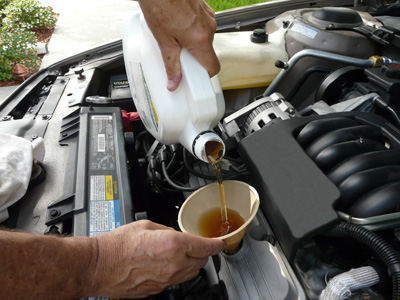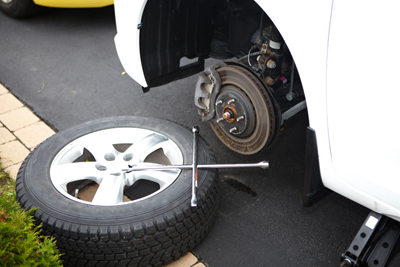 If your car leaks fluids or you spill some while filling up your vehicle, lawn mower or snow blower, your driveway might end up with a stain or two. Fluids such as oil, transmission fluid and gasoline can leave a stain on paved driveways and garage floors.
If your car leaks fluids or you spill some while filling up your vehicle, lawn mower or snow blower, your driveway might end up with a stain or two. Fluids such as oil, transmission fluid and gasoline can leave a stain on paved driveways and garage floors.
Here are some steps to help remove those stubborn oil stains.
If the oil spill is new, start by covering the stain with cat litter, cornstarch, baking soda or cornmeal, which may help absorb the extra moisture.
Determine whether the fluid is wet or dry. If the spill is new, start by covering the stain with cat litter, cornstarch, baking soda or cornmeal, which may help absorb the extra moisture.
Once the pavement is dry, or if the stain was already dry, wet the stain with water and scrub with a stiff brush and a paste made from baking soda and water.
Finally, rinse the pavement with a hose and let it air dry.
Coolant is pinkish or greenish but the green variety is more common than the pinkish variety. It can also be identified by its sweet smell and its thin consistency. Coolant leaks are one of the most common leaks on cars. While it might not be a serious leak, it is important to have it fixed. If the leak is not fixed, your engine will run low on its cooling agent leading it to overheat. Coolant can be deadly if an animal ingests it.
Oil is the most common fluid you will find leaking from your car. Used engine oil can be identified by its dark brown color and its slightly gas-like smell. Oil slowly sips into your driveway and leaves a dark residue. If you are driving a car with high mileage, you can expect minor oil leaks, but you can continue driving the car without experiencing severe problems.
Brake fluid has a slightly oily feel, medium thickness and is clear to yellowish. Brake fluid leaks are serious problems that can undermine your safety while driving. The car’s brake system works on a hydraulic pressure system where the brake fluid is the hydraulic fluid that maintains the pressure. Leaking brake fluid can result in a drop in pressure which could lead to brake failure.
Lim’s Auto Body is a full service auto body and mechanical repair shop locally owned and operated in Largo, Florida. For more information, go to our web site www.limsautobody.com or call (727) 422-3232.

